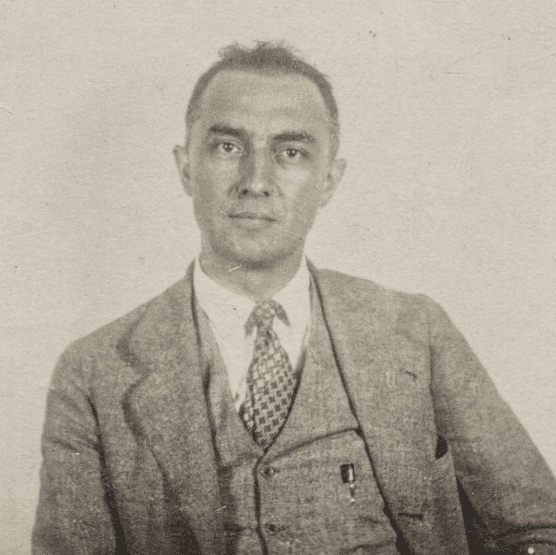Negin Rezaei
Tehran, Iran
 |
| Passport photograph of William Carlos Williams. Courtesy of the Beinecke Rare Book & Manuscript Library, Yale University. Circa 1920. Via Wikimedia |
Eric Cassell observed that physical pain and suffering are two distinct experiences and that pain is only one of the infinite number of sources that may cause suffering in human beings. Doctors, he believes, need to understand this distinction if they are to establish an effective connection with their patients. Successfully treating a patient’s pain and physical complaints will not assuage their sufferings unless their feelings, fears, values, disappointments, and temperaments are also understood.
How severely suffering is experienced depends on the unique characteristics of each person, their psychological state, life experiences, values, beliefs, and outlook towards the future. One suffers for a specific reason and one often suffers alone. Such suffering, throughout the history of the world, has resulted in great works of art. For as Aldous Huxley, the great English author once stated, “Can an artist do anything if he’s happy? What is art, after all, but a protest against the horrible inclemency of life.”
Medicine and art share the common mission of seeking to alleviate human suffering. Throughout history many doctors have sought refuge in art and created great art works based on the suffering of their patients or even their own. One such doctor was William Carlos Williams, an American writer, poet, and pediatrician. Born in Rutherford, New Jersey, in 1883, Williams graduated from the University of Pennsylvania and became a general practitioner. He specialized in Pediatrics at the University of Leipzig and at age twenty-six, published his first book, Poems.
Throughout his life as a physician, Williams was a successful poet. He also wrote many plays and articles, and was interested in painting. He practiced medicine until the age of sixty-three, but after having a heart attack and two brain strokes in successive years, he had to stop working. He was also hospitalized for four months because of the unstable state of his nervous system.
His famous poem written in the years after his sickness is “The Yellow Flower,” published in his book, The Desert Music and Other Poems.1 In this poem he narrates the very depth of his thoughts and emotions about suffering and disability. In the initial sentences of the poem he represents his frustration and fatigue as follows, “What shall I say, because talk I must? That I have found a cure for the sick? I found no cure for the sick . . .”
What such a successful physician is saying is that he has not found a cure for human pain, not even at the end of his professional life. The “crooked” and “obscure” flower seems to stand as a symbol of the author and his frustrated physical and mental state. He asks, “Is that flower for which all men sing secretly their hymns of praise?”
On seeing this “ungainly” and “deformed” flower to which he refers as “unnatural one” inside the glass, it is as if he was beholding his fatigued self in the mirror. He clearly sees that suffering is a shared state between all humans and not particularly his; as he puts it in the following verse, “Though strange to me, must be common one, is clear: there are such flowers with such leaves, native to such climate.”
He can speak but his desire and his longing have gone, “drained.” He compares himself to Michelangelo who was also enduring fatigue while building his sculptures. A second and the more delicate comparison is observed when he sees his half-paralyzed body as lifeless “slaves” made from stone, the body in which he is imprisoned as his freedom is taken away from him.
Then at last the poet seeks refuge in art to free himself from pain and suffering. He writes and composes poetry, just as Michelangelo created sculptures. For Williams, art is the only way for the “tortured bodies” to be saved and cured.
The humble yellow flower which was “a mustard flower and not a mustard flower” must accept and embrace all the frustration while enduring the sufferings as there is no way out. By writing and composing poetry, Williams attempts to relieve sufferings for which no cure has ever been discovered by medicine. As a healer, a patient, and artist, Williams beautifully represents the common ground between these disciplines.
End notes
- Williams, William Carlos. 1954. THE DESERT MUSIC AND OTHER POEMS. Random House.
NEGIN REZAEI is a 4th year medical student at Iran university of medical sciences. She was born in Tehran, Iran, in 1997 and lived there all her life. She has traveled to many places in the east, so has been familiarized with eastern cultures and its history. She is interested in poetry, literature, classical music, and painting and joined the Iran national choir group two years ago, along with reading various kinds of books on western philosophy, culture, and art. In the field of medicine, she has published two case report and review articles so far about a rare type of epilepsy in children.
Fall 2021 | Sections | Literary Essays

Leave a Reply